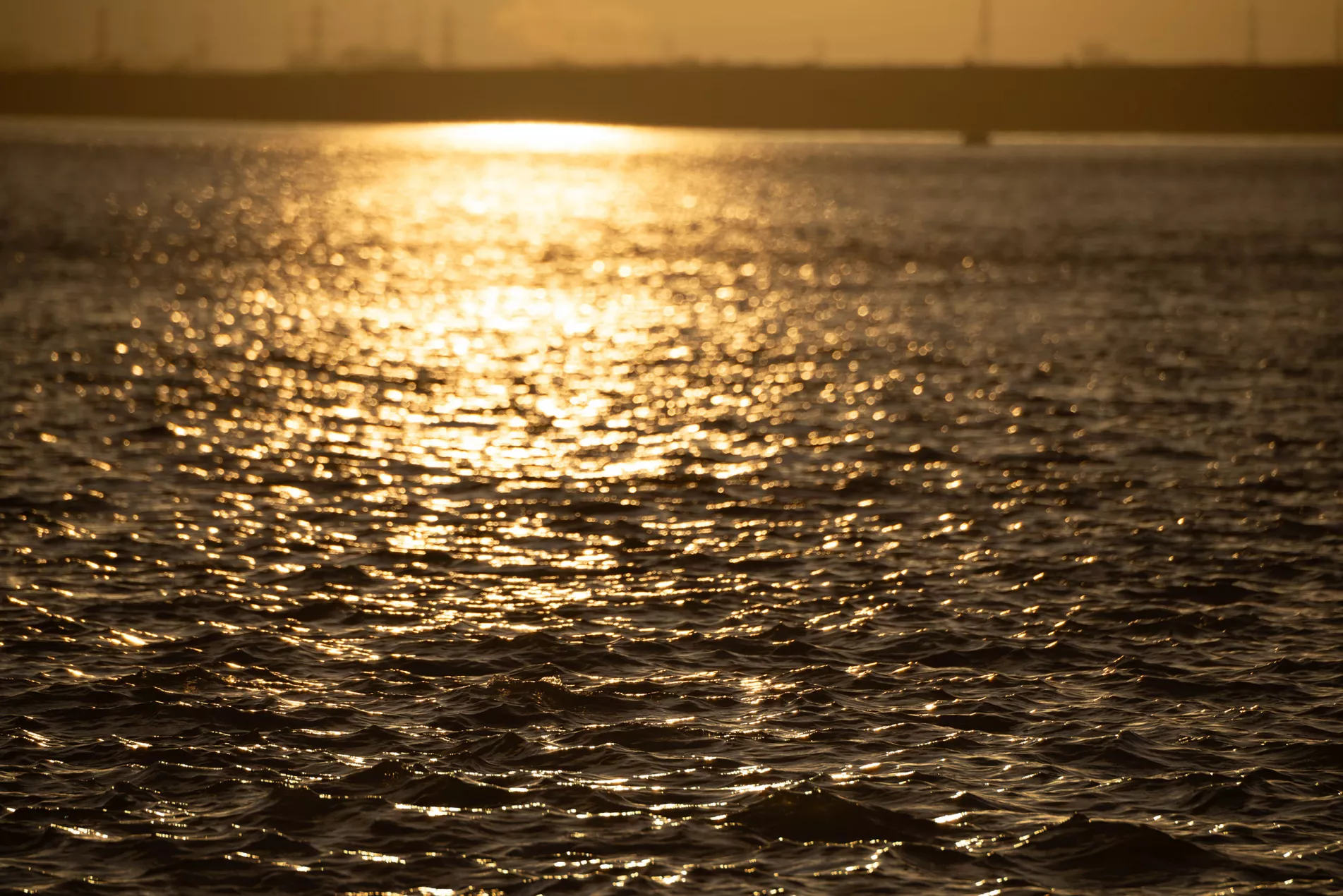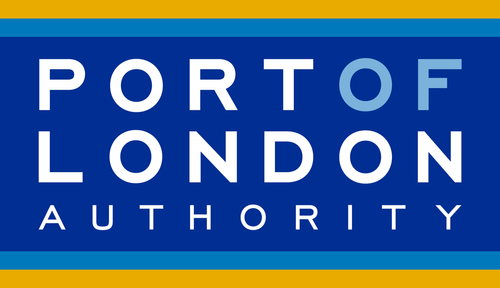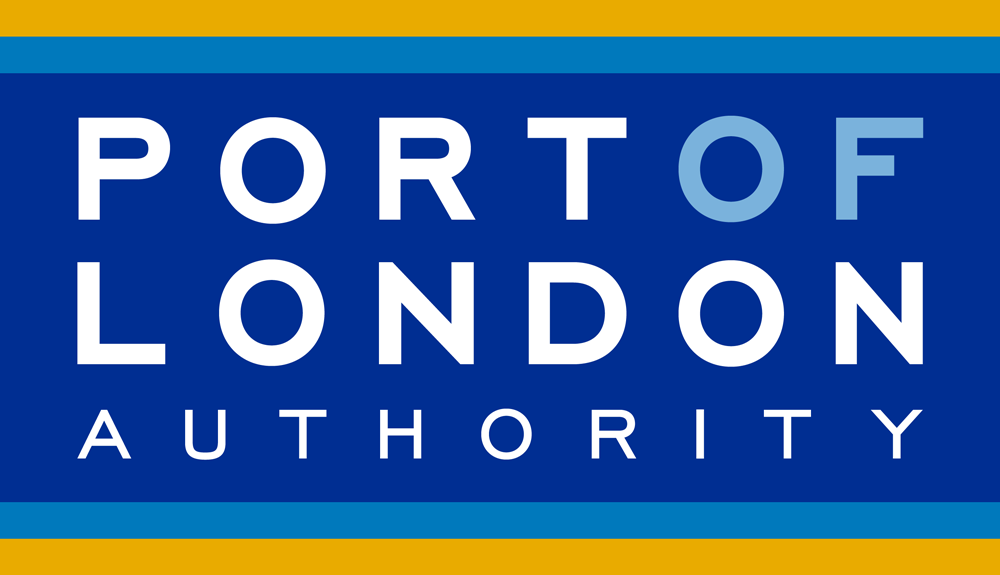Live Tides
NOTICES TO MARINERS
Charts & Surveys
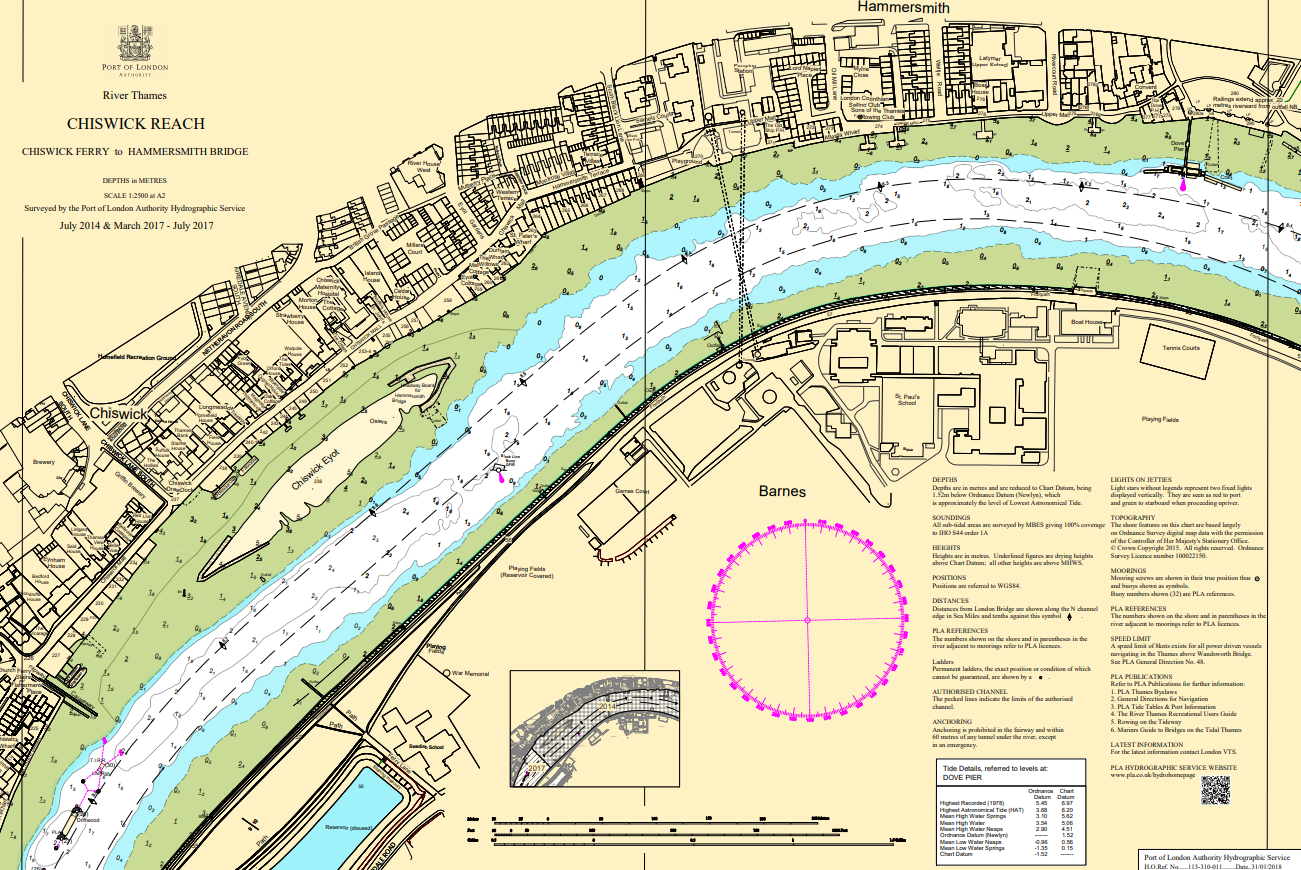
Incident reporting
Life-threatening emergencies on the river:
Call 999 and ask for the Coastguard
For near miss, safety observations and incident reporting click below
When ‘Going the Extra Mile’ Means Crossing the North Sea
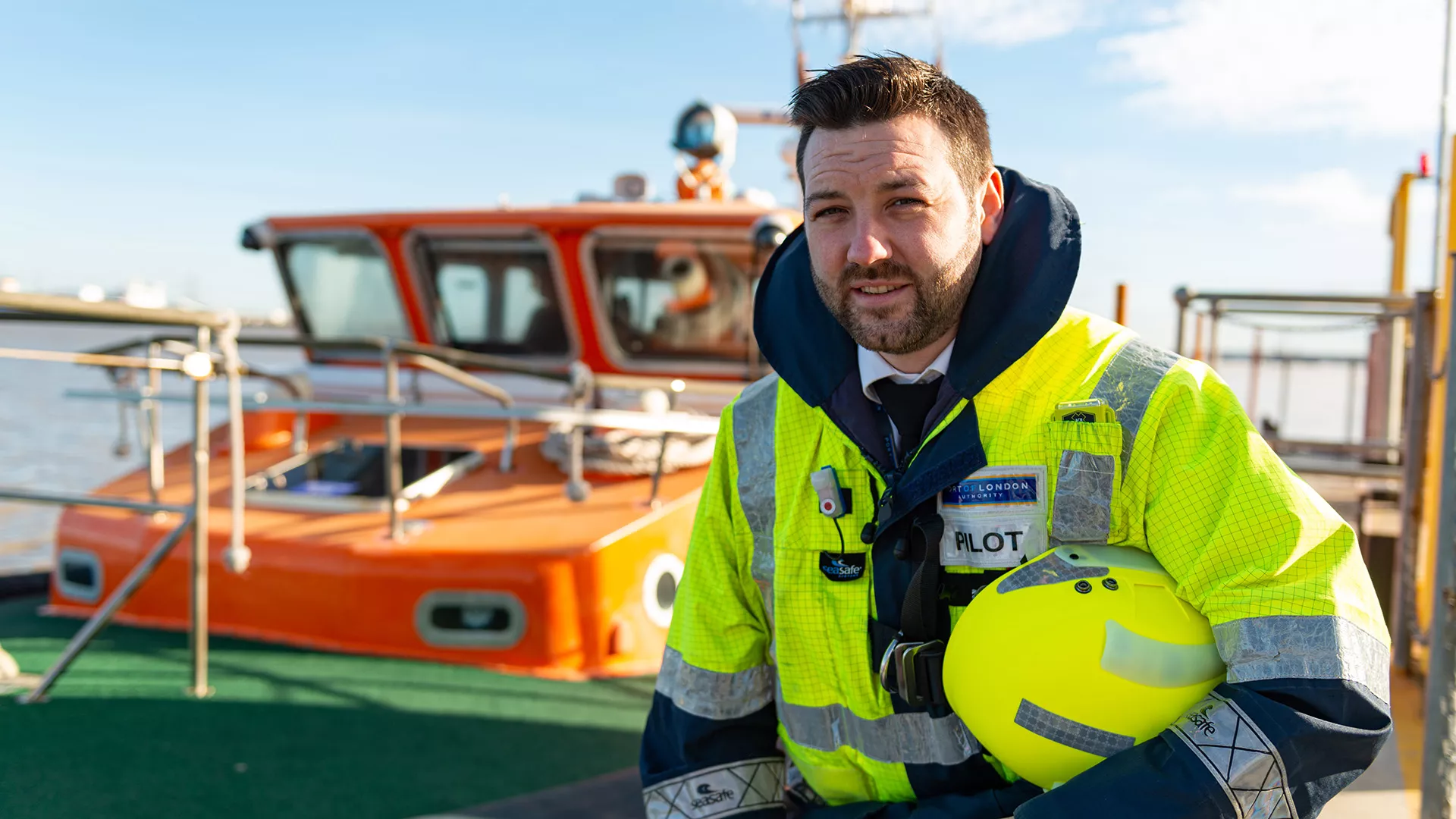
Sometimes, when weather conditions prevent our Pilots from disembarking at the Pilot stations in our district, it may be necessary to overcarry them so as not to delay the ship. The Pilotage Act 1987 states that a Pilot cannot be taken beyond their district without their consent, therefore overcarriage is voluntary. When overcarriage is agreed the PLA’s regulations require the vessel’s Agent to facilitate the Pilot’s repatriation back to their place of work. Overcarrying simply means they stay on board the ship until it reaches its next port or an alternative pilot station outside of the Thames district.
Class 3 PLA Pilot David Barnett was recently overcarried to Rotterdam
So, the process is actually very straight forward, the Pilot Coordinator phoned me to allocate the job to me three hours before I needed to be on board. The weather was not looking pretty, so they asked if I would mind being overcarried to Rotterdam as all the Pilot Stations were offline, meaning they were not serving ships.
The reason the ship could not be served at our Pilot Stations was the large seas and high winds and Dover, which is usually the backup option in difficult conditions, was also offline due to the dangerous prevailing conditions.
Knowing that this was near to Christmas and it being a feeder container ship, I can understand the commercial pressure on ships’ Masters, crews, and their agents and with this in mind I felt it was part of my job and saw no reason not to go. We, the pilot body, are very proud of our service rates, and it is rare that we cannot serve a ship.
To prepare for being overcarried you must pack lightly and most importantly, do not forget your passport! With regards to packing, you cannot use a big bag as you may be departing the ship in a pilot cutter from a different port with different resources. You just do not know how you are getting off, so the less luggage the better. You also have your SeaSafe coat (Pilots inflatable jacket) with you as well as your helmet, so again light packing just makes it an easier journey home.
So, the paramount items are underwear, toothbrush, some comfortable clothes, and my slippers. You definitely need a pair of slippers to see you through the time on board! Then get your phone out and start downloading shows on Netflix, as you know once you clear the phone coverage range, you're not going to have internet.
The other must-haves in the bag are a European adapter for your phone charger, as most ships are 2 pin plugs and of course, bring sweets, I needed them...
I was lucky that it was only a jaunt to Rotterdam, so once I cleared the London district, I remained on the ship’s bridge chatting with the captain and his team before handing over the ship to him. I then phoned my wife to let her know when I would have coverage again in the event she was trying to contact me.
At about 21:00 I was shown to a cabin, made my bunk up, had a shower and watched a movie on my phone before reading my book. You don’t really sleep that well when you’re on a ship that you're not familiar with and with the rolling of the ship (did I mention the weather was grim?) lots of stuff moves in the cabin, so you spend most of the night trying to stop stuff making noise.
At 07:00 Rotterdam time we took a Rotterdam Pilot, so of course I returned to the bridge to chat and see how other districts work. A gentleman of a Pilot boarded, and we chatted throughout, drank very strong espressos (about 4 I think) and once the ship was berthed in the Port, I went for some breakfast on board with the Captain and Crew.
At this stage you are tired but once off the ship I was escorted to immigration to have my passport checked and with that, I was on route to Rotterdam airport.
Rotterdam airport was nice and quick the only issue I had was the SeaSafe coat due to the regulations around compressed gas for traveling. So, once the supervisor had cleared this, I was on the plane and London bound.
Once back at base I was 23 hours away and 23 hours later, I was back on the Thames on another ship - normal service resumed.
I don't mind being overcarried sometimes, the job is what it is. I wouldn’t go as far to say “off on my holidays or anything”, but it is nice to see the other ports and it had been a few years since I was in Rotterdam port. It’s good to see things from a different port's perspective. Although, I think it would have been more enjoyable if it were summer, and the North Sea wasn’t in such a bad mood!
Related content

Location: London/Gravesend Remuneration: £28,971 per annum for a commitment of up to 24 days per...
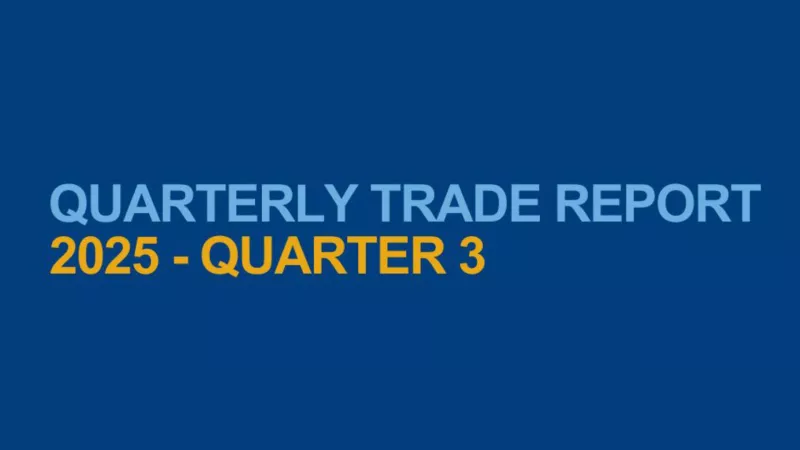
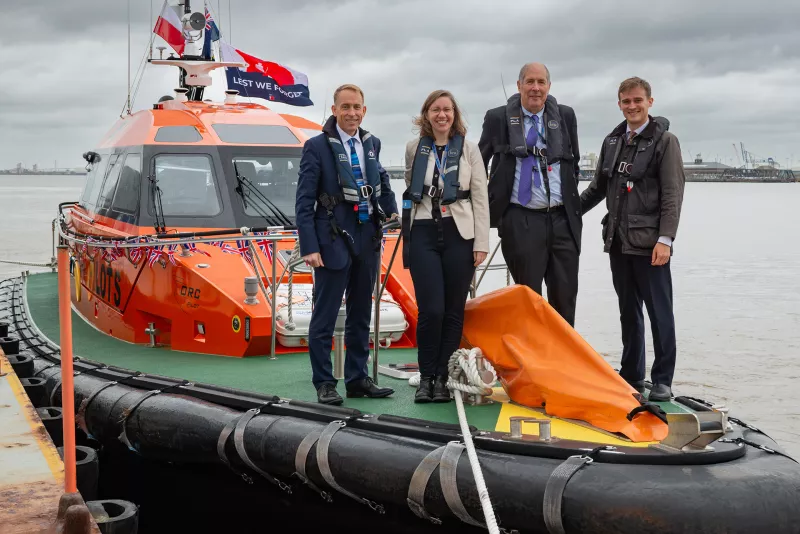
Behind the scenes: PLA’s role in the Mayor of London’s New Year’s Eve Fireworks 2024

New Year’s Eve on the tidal Thames is one of the busiest and most spectacular nights of the year, with thousands gathering on vessels and along the shores of the river through central London to watch the world-famous fireworks. This year, there were about 90 vessels of varying sizes out to watch, with approximately 10,500 people choosing to ring in 2025 afloat on the Thames and another 75,000 watching from ashore as well as the global audience.
The event is a vibrant celebration with an exciting party atmosphere, but behind the scenes, months of meticulous planning ensure it is ultimately a safe night for all.
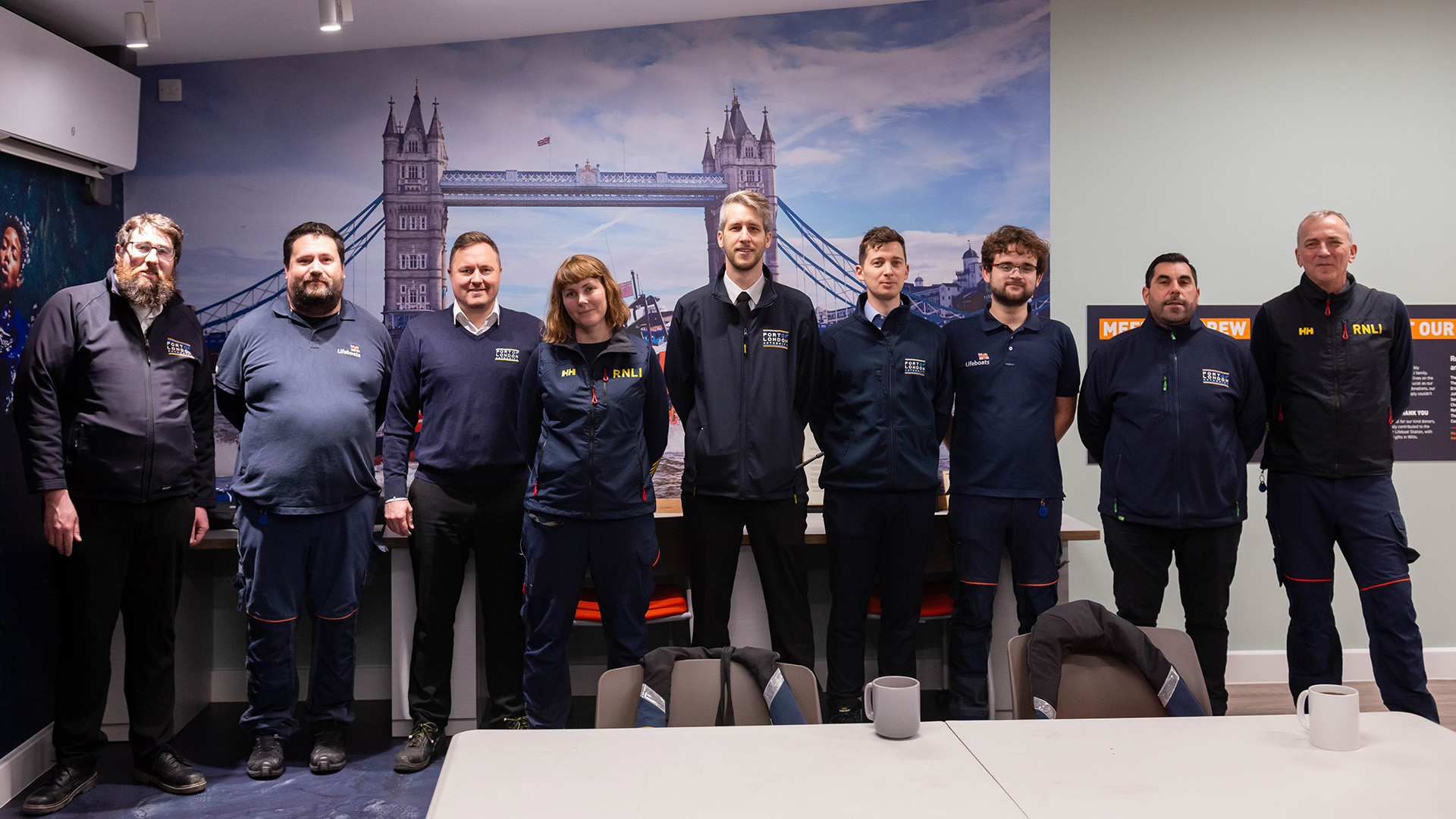
This New Year’s Eve just passed was the third time as PLA lead for our Deputy Harbour Master, David Allsop.
On the night, the PLA’s main roles are: navigational safety, as always; enforcing a river closure around the firework zone for the display; and liaising with Thames partners (including the Met Police’s Marine Policing Unit, HM Coastguard, RNLI, London Fire Brigade’s river station and fireboats and many more) to work together to deliver a safe New Year event.
On the night, PLA staff manage traffic movements, and are responsible for enforcing the safety zone around the firework launch area. A PLA Harbour Service Launch is positioned on either side of the firework zone to enforce the closure and oversee the safe congregation of vessels. At around 11:45 PM, the PLA lead makes the final call on whether the fireworks can proceed safely from a river perspective. A lot of planning and organisation goes into making New Year's Eve a safe and spectacular night on the river – it’s the crucial months-long detailed planning that helps keep everything running smoothly on the night.
David said: “I am privileged to work with very experienced and skilled PLA colleagues and river partners – the teamwork and cooperation between us all, and the bringing together of the experience and talent of so many dedicated professionals, is the real secret to a safe NYE on the river.”
Related content

Location: London/Gravesend Remuneration: £28,971 per annum for a commitment of up to 24 days per...


Tidal Thames Masterplan seeking views of communities in Wandsworth, Barking and Dagenham, and Havering
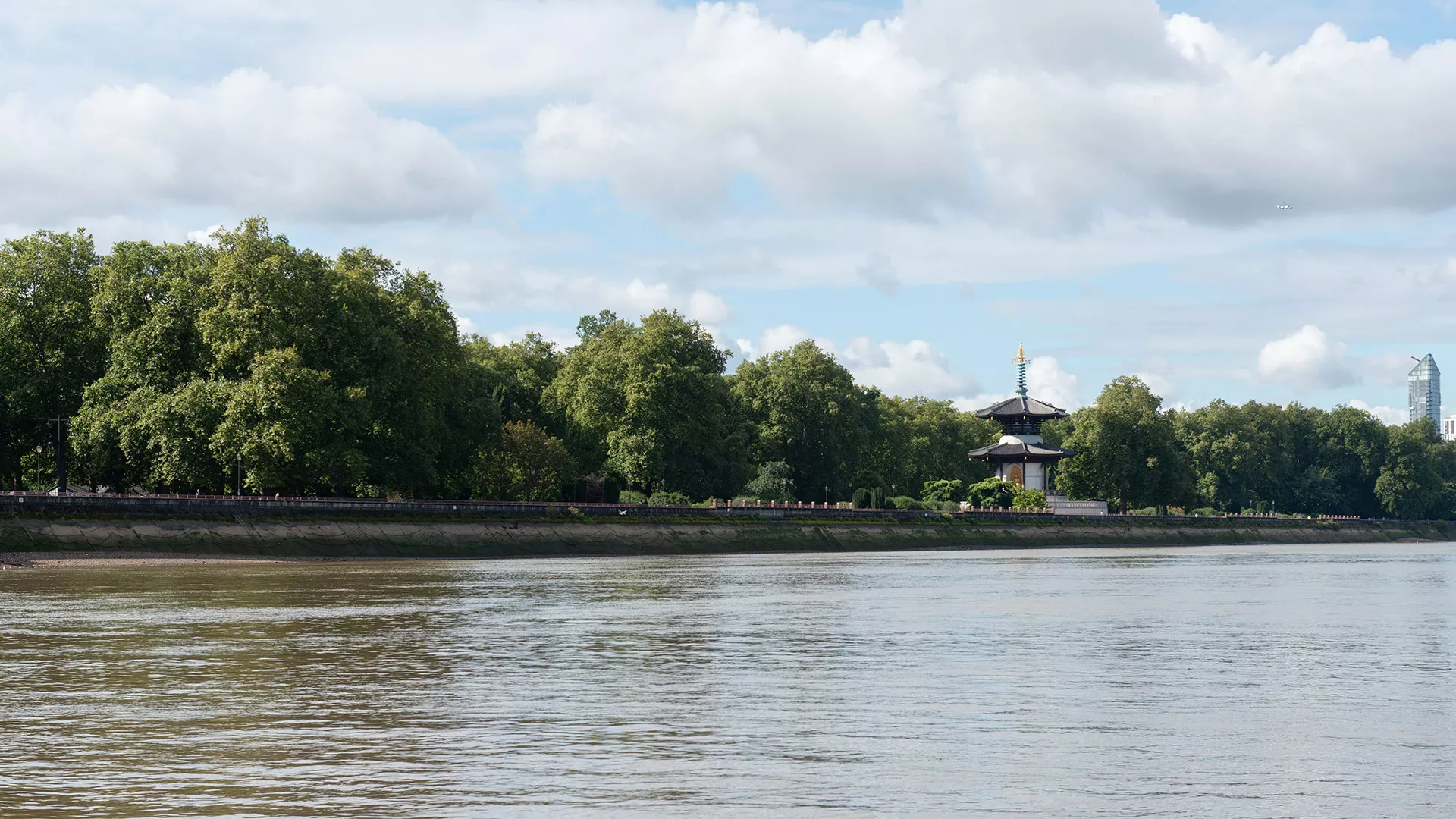
The Port of London Authority is calling on communities in Wandsworth, Barking and Dagenham, and Havering to share their ideas and ambitions for the River Thames in their area.
All responses will be used by the PLA to inform its Tidal Thames Masterplan, which seeks to increase the river’s use for communities, businesses and recreation, as well as enhance its natural environment.
The Tidal Thames Masterplan, once complete, aims to become an essential guide for investment across all the 22 local authority areas along the river’s banks. Aligned with the three core themes of the PLA’s Thames Vision 2050, Trading Thames, Destination Thames and Natural Thames, the consultation results will document the scope for maximising the economic, environmental and social potential of the river at a local level.
Mike Atkins, Senior Planner at the PLA, explained:
“We’re keen to give local people a chance to voice their opinions to guide future investment decisions that relate to the river in their area. Therefore, we want to encourage people who live in Wandsworth, Barking and Dagenham, and Havering, to consider the Tidal Thames Masterplan and put forward their thoughts and ideas on what should be included. We will also be engaging with the Greater London Authority, the Environment Agency, landowners and river-based businesses.”
The London borough of Wandsworth includes several Safeguarded Wharves, which represent key opportunities for the increased use of the river for water-borne freight, taking lorries off roads and seeing goods moved by river. It also includes the iconic Battersea Power Station, where there is potential for the increased use of the river bus service, as well as sustainability enhancements at the pier. Putney Embankment, which forms a key part of Wandsworth's heritage with regard to river sports and general recreational use of the river, and hosts various internationally important events and activities, will continue to be protected and promoted for river related recreational opportunities. Many other existing piers and structures in the area also have the capability for sustainability enhancements (such as electric charging or other green technologies).
With Barking and Dagenham’s large-scale riverside development at Barking Riverside, there are many opportunities for increased recreational facilities, as well as improved riverside paths and biodiversity enhancements. The borough also comprises a number of Safeguarded Wharves, which, with future investment and support could facilitate the growth of river freight.
East of Barking & Dagenham lies Havering, which similarly has opportunities for both river-related freight and marine logistics, particularly around Frog Island and Coldharbour Jetty. As one of London’s greenest boroughs, with more than half of the borough designated as Metropolitan Green Belt, there are also opportunities for potential ecological enhancements in various locations, including at Rainham Marshes.
Running until 11 February 2025, the consultation for the Tidal Thames Masterplan in each of the boroughs of Wandsworth, Barking and Dagenham, and Havering, will be open for a period of eight weeks.
Comments on the draft plan can be made via the masterplan website, or sent to: [email protected]
Related content

Location: London/Gravesend Remuneration: £28,971 per annum for a commitment of up to 24 days per...


Santa on the Thames: PLA partners with Evelina Children's Hospital Charity

The PLA is proud to have partnered with Evelina London Children's Charity to ensure that the children in their care experience a magical Christmas.
A festively decorated PLA launch boat carrying Santa travelled down the Thames from Tower Bridge to Waterloo Pier, where he was greeted by twenty-five children ready to board a Thames Clipper for an hour-long tour of the river.
Once aboard the Thames Clipper, each child received an early Christmas present. Thanks to the generous support of DP World, Uber Boats by Thames Clipper and Tideway London, we were able to gift over sixty presents.
These gifts were distributed among the children on board, their siblings, and some for the children at the hospital who were unable to join the festivities.
We are grateful to be part of this collaboration and are looking forward to continuing our support for Evelina London Children's Charity in the future.
Related content

Location: London/Gravesend Remuneration: £28,971 per annum for a commitment of up to 24 days per...


Tide Tables and Port Information 2025
View the Tide Tables and Port Information 2026 digitally now
Available to pre-order in the PLA Shop soon.
PLA Sports Clubs Discounts
PLA River Works Licenses: Charges and Discounts for Sports Clubs
The Port of London Authority (PLA) has introduced a refreshed approach to how sports clubs on the tidal Thames are charged for River Works Licenses (RWLs). Our new discount structure supports clubs in making the river more accessible for sport and leisure, while keeping costs as low as possible.
All sports clubs will receive a 45% discount on their river works licences as standard. All sports clubs are eligible to apply for an additional discount, of up to 55%, if they meet the criteria specified below. Some clubs, such as charities, are eligible for a 100% discount.
About the Port of London Authority
As a trust port, the Port of London Authority (PLA) has no shareholders and operates for the benefit of customers and stakeholders now and in the future. Our operations cover 95 miles of the River Thames, from Teddington to the North Sea. We work to keep commercial and leisure users safe, protect and enhance the environment, and promote the use of the river for trade and travel.
The PLA receives no government funding and has no shareholders - all income is reinvested in the river. A trust port is defined by the Department of Transport as ‘a valuable asset presently safeguarded by the existing Board, whose duty it is to hand it on in the same or better condition to succeeding generations. This remains the ultimate responsibility of the Board, and future generations remain the ultimate stakeholder.’
As the Statutory Harbour Authority, the PLA has a key role to play in providing core safety, environmental and commercial services to a huge range of customers and we seek to do that in the most cost-effective way possible. We also have a duty to maintain our assets in resilient condition, to facilitate a wide range of stakeholders using the river and to enable the port and river to continue to play its role sustainably, long into the future.
All of this is brought together in Thames Vision 2050, published in 2022, and available on the PLA website.
Active Thames
The PLA is committed to promoting use of the river for sport and, in 2021, established the Active Thames programme as a key part of the Thames Vision. Active Thames supports the development of water sports and walking on the tidal Thames and inland waterways in London, Kent and Essex with the objectives of increasing the sporting offer, supporting the growth and development of the workforce, maximising the use of clubhouses and the Thames path, and improving access and inclusion. There are two employees dedicated to Active Thames, and there are two assistant Harbour Masters who focus on sports events and safe boating.
The organisations working together on Active Thames include; Active Essex, Active Kent & Medway, London Sport, British Rowing, Paddle UK, RYA, Canal & River Trust, Thames Path National Trail and PLA. Find out more at activethames.co.uk
River Works Licenses
A River Works Licence (RWL) is a permission granted by the Port of London Authority (PLA) for an individual or organisation to place structures (works) on sections of the River Thames registered as PLA property, ensuring there is no unlawful use. The PLA charges a licence fee for a RWL, which compensates for the use of its land and enables the PLA to carry out its obligations and various activities on the river.
River Works Licenses (RWLs) are necessary for any structure or facility on the river, ensuring safe, environmentally responsible, and commercially viable use of the waterway. Sports clubs are charged significantly less than commercial entities for RWLs, and with our refreshed discount structure, they may receive further reductions to help them thrive.
The PLA is transitioning to using CPI instead of RPI for sports clubs licences, aligning with the UK Government's decision to adopt CPI as a more accurate and reliable measure of inflation starting in 2030.
Discount Structure Overview
A sports club is defined as a facility with the primary goal of supporting people to take part in sporting activities. This also includes sports organisations, training centres and charities.
All sports clubs will receive a 45% discount on their river works licences as standard. All sports clubs are eligible to apply for an additional discount, of up to 55%, if they meet the criteria specified below.
*Open Active
Any opportunities which are open to the community need to be digitally accessible, too. Simply listing an activity on one platform, e.g. Facebook, would not be considered digitally accessible. More information on Open Active is available here https://www.openactive.io/ and a free platform for all clubs to use is available here: https://opensessions.io/#/home
**Exceptions may be made for clubs formed according to unique interests or demographics, e.g., the Sea Cadets who only work with children.
Sports clubs may be eligible for discount through hosting/facilitating access for another club, for example a facility managed by a private school might host a charity and be entitled to a higher discount. This should be discussed with the PLA.
Total Discount
45%
Qualifying Criteria
All clubs are eligible to receive a 45% discount as standard.
We require all clubs to:
- Operate safely, following the PLA byelaws, rules of navigation and the Tideway Code.
- Be environmentally responsible, meaning that the club avoids pollution and environmental harm.
- Have valid insurance which covers all activities of their members and activity delivered by the club.
Total Discount
60%
Qualifying Criteria
To qualify for Silver discount sports clubs are required to:
- Meet the requirements set within the Bronze tier.
- Be affiliated to/members of their National Governing Body or provide documents that show: Club Constitution, Health and Safety Policy, Risk Assessment, Safeguarding Policy, Equality Policy, Club Rules and the provision of an AGM.
- Publicly state how they support club membership for people facing financial hardship.
- Deliver open sports activities on an average of a monthly basis between March and November. We request a minimum of 10 open sessions. Examples include taster sessions, courses or open days.
- Promote the above open sports activities through Open Active* digital platforms.
- Charges for open sports activities must be appropriate and affordable to the local community.
- Be open to the whole community**, as defined within CASC guidance.
Total Discount
75%
Qualifying Criteria
To qualify for Gold discount sports clubs are required to:
- Meet the requirements set within the Silver tier.
- Meet the requirements of a charity/CASC/CIC.
- Deliver targeted outreach programmes throughout the majority of the year.
Total Discount
100%
Qualifying Criteria
To qualify for Platinum discount sports clubs are required to:
- Meet the requirements set within the Gold tier.
- Have the primary purpose of providing sport and leisure for disadvantaged communities.
- Be registered as a charity with the Charities Commission.
- Be focused on community outreach – not performance sport or activities for members only.
- Any income generated through non-sporting activities must be reinvested to achieve the charitable aims, and no owner or shareholders may benefit from the delivery of charitable activities.
Process
Sports clubs wishing to apply to the PLA for consideration or renewal of their discount will need to do so every three years by completing the application form. Applications for the upcoming discount period must be submitted by 31 December 2024, with discounts taking effect from January 2025.
From January 2025 onwards, clubs are welcome to submit an application at any time of the year. The discount, if applied, will be applied from the next relevant licence fee review date unless agreed otherwise.
FAQs
The PLA is committed to achieving the goals outlined within the Thames Vision. One of our key goals is for the Thames to grow as a Destination for sport and leisure. We want to see more use of the river for sport and so, to help with this, we are providing financial relief to sports clubs by providing a 45% discount on licencing fees to all clubs. To incentivise best practice amongst sport clubs and help create a Thames that is accessible to all, we are providing an opportunity to gain additional discounts for inclusive practice – with discounts of up to 100% available. We hope that this will support growth in use of the river for sport and leisure, reduce the overall costs faced by clubs, provide consistency, and incentivise clubs to be more accessible and inclusive. Applying for an additional discount is entirely optional.
Yes, we have provided discounts to clubs in the past on a case-by-case basis. One reason behind introducing the discount scheme is to improve transparency around the availability of discounts and to standardise how they are, or how they are not, awarded.
The PLA is responsible for safety of navigation on the tideway, and to support this we must operate on a commercial basis. The PLA receives no government funding and has no shareholders - all income is reinvested in the river. As a Trust Port the PLA has powers to raise revenues by levying dues and charging for the use of port facilities. Income from sports clubs, although small when compared with commercial income, is still necessary to support the operations of the PLA. We publish an Annual Report and Accounts every year.
We plan to run the discount scheme on a basis of trust – trusting that clubs will report their position accurately. We reserve the right to conduct spot-checks on any club at any time and, if doing so, will require evidence of documents/practice within 40 days. We will also check, with NGBs, that any club stating affiliation to an NGB has done so.
We have worked hard to make the process of obtaining a discount as straightforward as possible. By operating on a basis of trust, we are not requiring clubs to submit extensive lists of documents for their initial application. You can expect the application process to take less than an hour.
PLA encourages multisport facilities. If you are looking to partner with another organisation to gain a discount, please contact our estates team for their advice early on in the process – do not assume that you will automatically be able to achieve a higher discount. Naturally, the sport provided should include use of the river. We would not, for example, award a discount to a club for hosting a community book club.
Our river users are, for the most part, deeply connected to the river environment and keen to see high standards of safety on the river. If we become aware of negligent or deliberate actions to damage the Thames, we may withdraw the discount.
An outreach programme is one targeting disadvantaged audiences. By disadvantaged audiences we refer to those defined as less likely to be active by Sport England including; lower socioeconomic groups, people with disabilities and/or long-term health conditions, and people from minority ethnic backgrounds.
Some clubs might be able provide free open activities, for example the first session might be free. However, we understand that not all clubs are able to do this, and that providing a charge for activities helps to ensure attendance, too. Pricing should not be a barrier to participation and should be inclusive, allowing people from various economic backgrounds within your local community to participate. We therefor ask that any charges are appropriate. For example, a £10 charge towards coaching costs for an hour’s activity would be appropriate - £50 would not.
The additional discounts intend to support clubs to be more accessible and inclusive. Lack of access to high-quality open data in the sport and physical activity sector is a barrier to getting people active. OpenActive helps to address this through enabling members of the public to search and find opportunities to get active. It also shows that your club is truly open to reaching new audiences, and it is recognised as best practice by Sport England.
You are still eligible for a discount of 45%. We understand that some organisations focus on delivering targeted outreach and have schemes/programmes in place to support this, for example through partnering with another organisation such as a community group or a disability sports club to reach the targeted audience. If this is the case, please make this clear when you apply for the discount.
We do not intend or wish to retract any club discount.
The PLA is responsible for safety of navigation on the river so, if we become aware of a club operating in an unsafe manner, it would be contradictory to continue to provide a discount to that club.
Example A: A rowing club repeatedly ignores the ebb tide flag status and has had multiple incidents, including a capsize of junior rowers. The Harbourmaster team speak to the club and find that the club does not intend to change its behaviour and will continue to ignore the ebb tide flag status. The Harbourmaster would make the PLA Estates team aware of this, and the Estates team would write to the club, notifying them of the loss of their discount due to unsafe practice.
Invoices to clubs are issued quarterly, and so the discount would be removed from the next invoice. Example B: A paddling club has had several incidents requiring the attention of the Harbourmaster. The Harbourmaster had no concern about how the club operates and is satisfied that the club is operating safely. There would be no concern raised with the Estates team. The PLA is also focused on improving the cleanliness and environment of the Thames. If we become aware of negligent or deliberate actions to damage the Thames environment, or harm wildlife, we may withdraw the discount. Any club that has its discount removed can apply again the following year.
Yes. You are able to apply for the discount throughout 2025. After 2025, we request that clubs apply for the discount by 30 November each year.
If you have any other questions about the discount scheme, please contact Jenny Cooper-Low, Lead – Thames Vision and Partnerships at [email protected] or [email protected].
The Port of London Authority awards £50,000 to support local river clean-ups and the transition to Net Zero
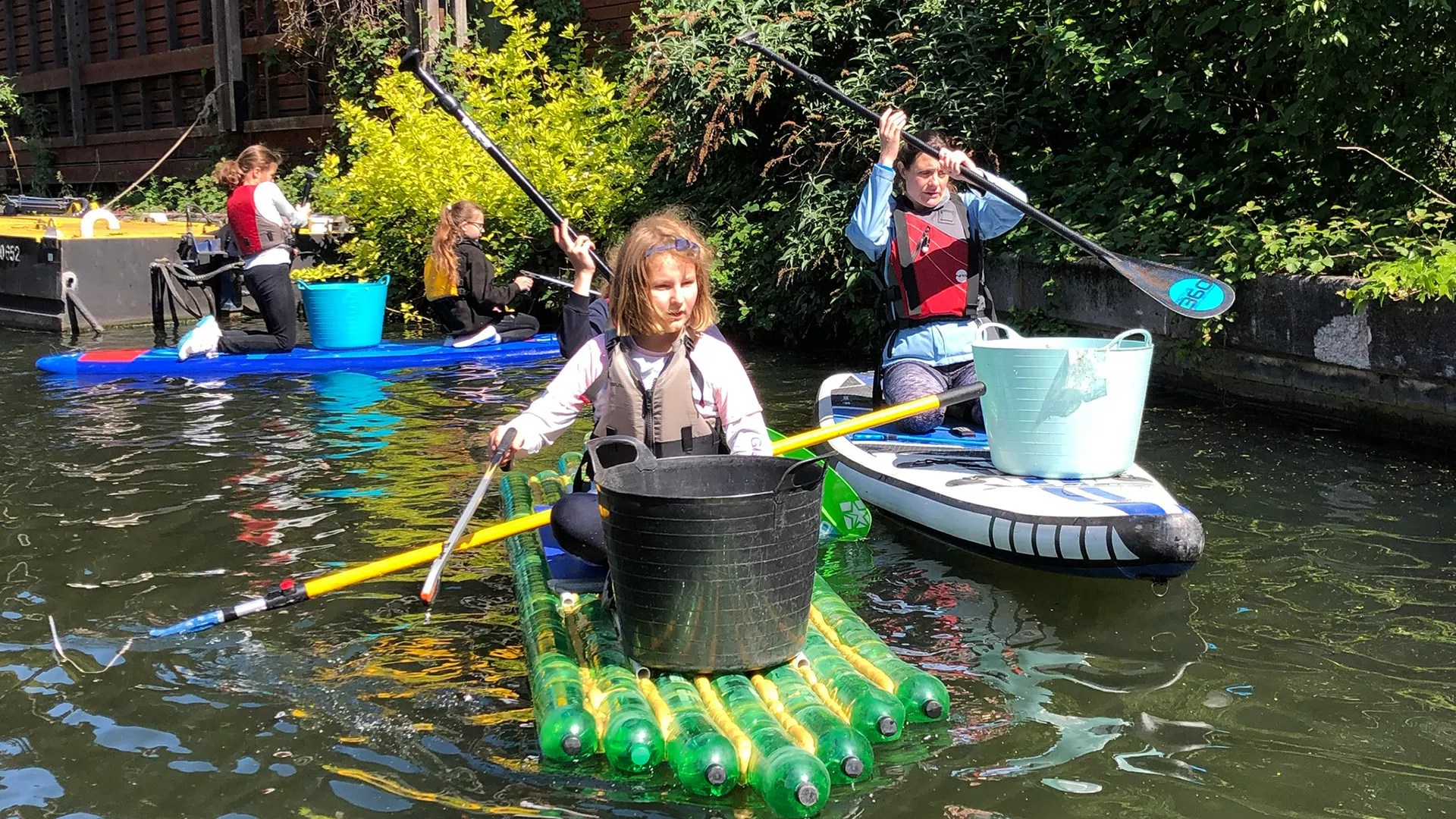
The Port of London Authority (PLA) has today invested £50,000 into six community projects, including £17,500 for two initiatives supporting citizen scientists to detect pollution in the river and a £13,500 scheme to tackle ‘range anxiety’ for those running electric boats by installing a new river vessel charging point in Hammersmith.
The PLA’s Thames Environment Fund – now in its fourth year – invites community groups and academics to put forward innovative ideas to help protect and improve the River Thames.
Funding of £2,490 will help track eel migration from the Kent Marshes into the River Thames and £9,059 will support the restoration of Deptford Creek.
The Furnivall Sculling club has been awarded £7,500 to replace two petrol boats with electric boats and add a charging point, helping to cut emissions and support efforts to decarbonise the river.
PLA Director of Sustainability Grace Rawnsley said:
“We want to see a clean, healthy, thriving River Thames. We understand the valuable contribution residents and experts can offer, and we’re committed to supporting innovative projects that will revitalise and enhance the river’s natural environment.”
The PLA’s Thames Environment Fund is an annual program that has awarded a total of £114,000 to 20 community environmental projects over the last four years.
The PLA has vision for a clean river, free of sewage, waste and other pollution, supporting greater biodiversity and recreational use. As set out in the PLA’s Net Zero River Plan, we aim to decarbonise the River Thames by 2040.
Related content

Location: London/Gravesend Remuneration: £28,971 per annum for a commitment of up to 24 days per...


Electric Thames with PLA Secures Major Funding Boost to Decarbonise the River
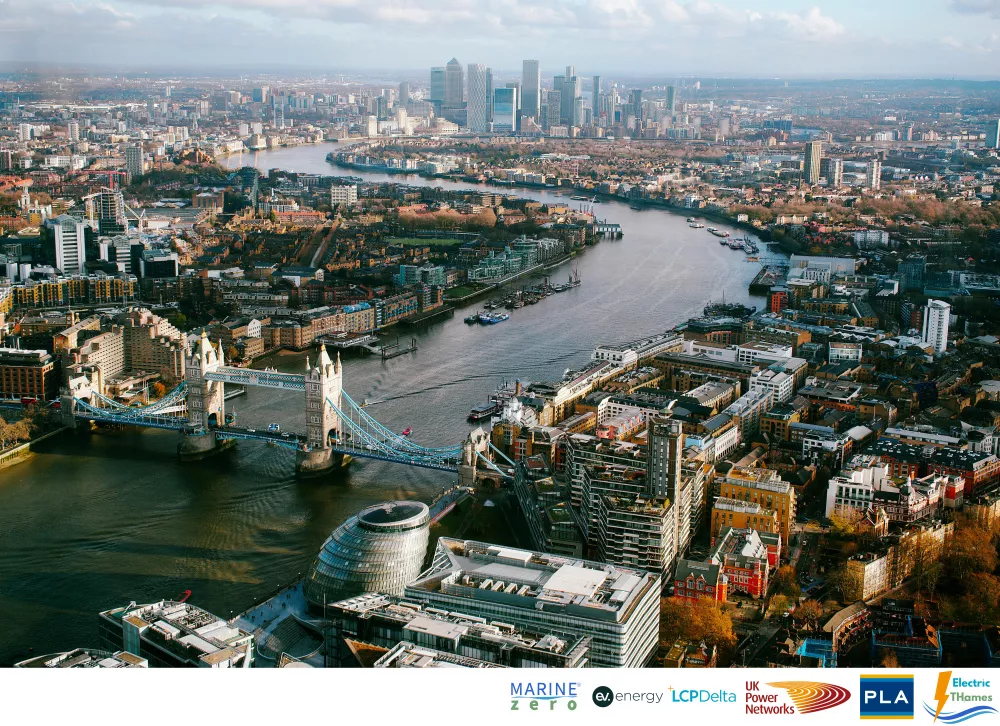
A ground-breaking project to decarbonise the River Thames and bolster London’s energy network has secured a significant funding award from the UK Government’s Strategic Innovation Fund (SIF).
After successfully completing Discovery in May 2024, demonstrating the potential for electric vessels to balance London’s energy demand, the Electric Thames project has now received additional funding as part of Round 3 Alpha of Ofgem’s SIF competition.
The Port of London Authority (PLA) and ev.energy has partnered with the Electric Thames initiative, led by UK Power Networks, as it transitions to the next phase of the project. Maritime energy transition specialist Marine Zero, and energy transition consultants LCP Delta will continue to deliver the maritime and energy modelling elements of the project.
The Electric Thames project seeks to transform the River Thames into a dynamic energy asset by enabling electric vessels to store surplus renewable energy—such as wind and solar power—when it is abundant and cost-effective. This stored energy could be returned to the grid during peak demand, increasing London’s flexible energy capacity and advancing the capital’s Net Zero ambitions.
Alpha got underway on 1 October 2024 and is focusing on mapping current and future energy requirements for different vessel types operating on the Thames. The team will explore scalable solutions and potential pathways for adoption across the broader UK market, laying the foundation for widespread implementation.
Andy Hurley, Operations Director at Marine Zero, said:
“We are thrilled to welcome the Port of London Authority and ev.energy to the Electric Thames project team. Together with our partners LCP Delta and UK Power Networks, we are now positioned to deepen our understanding of the operational requirements and key adjustments needed to make zero-emission vessels a viable option for Thames operators.
"Our primary focus during Alpha is to examine the financial implications and benefits of transitioning to cleaner operations. By establishing resilient and sustainable financial models, we aim to provide operators with practical and clear pathways towards adopting zero-emission solutions for vessel and quay operators.”
Grace Rawnsley, Director of Sustainability and Net Zero Transition at the Port of London Authority said:
“Having supported the Electric Thames project in its early days, we are delighted to be joining as a formal partner. At the PLA we care for, champion, and celebrate the river, so it is a natural fit to join with a project which brings innovation and environmental ambition together, helping towards our vision of the River Thames becoming net zero.”
Phillip Twiddy, Senior Consultant, LCP Delta added:
“We previously showed that there is a huge level of interest from operators in decarbonising vessels and operations on the Thames, and there is a significant benefit to be gained from a well-managed transition. We’re looking forward to working with the marine, energy, and investment sectors to develop economic solutions to enable decarbonisation of the Thames and rivers throughout GB.”
Luca Grella, Head of Innovation at UK Power Networks, said:
“The Thames has been the lifeblood of London for thousands of years, so it is exciting to be laying the foundations for it to enter the age of green energy. Our aim is to create a blueprint that could revolutionise maritime transportation, and be scalable across the UK and beyond.”
As the Electric Thames project moves forward it is poised to play a crucial role in the Port of London Authority’s Net Zero transition and support London Mayor Sadiq Khan’s ambition for a Net Zero Carbon London by 2030. The project will also offer a scalable blueprint for decarbonising the UK’s extensive network of rivers and inland waterways.
Related content

Location: London/Gravesend Remuneration: £28,971 per annum for a commitment of up to 24 days per...


Jonson Cox and Sir Philip Jones reappointed to the Board of the UK’s biggest port, the Port of London Authority

The Secretary of State for Transport has confirmed that Jonson Cox CBE, Non-Executive Chair, and Admiral Sir Philip Jones GCB DL, Non-Executive Director, have been appointed to the Board of the Port of London Authority (PLA) for second terms.
Jonson and Sir Philip’s second terms will begin on 4 April 2025, each for a further three years.
Jonson Cox CBE, said:
“I am delighted to be reappointed as Non-Executive Chair of the Board and for Sir Philip to be joining me for a second term. I am proud of the focus the PLA brings to navigational safety, cleaning up the Thames, building economic growth and resilience, and investing in communities and businesses. I look forward to delivering even more progress on our ambitious Thames Vision strategy and cementing the Port of London’s position as the UK’s leading port, Net Zero by 2040.”
Related content

Location: London/Gravesend Remuneration: £28,971 per annum for a commitment of up to 24 days per...


Port of London Authority supports and is driving action for clean water
Port of London Authority (PLA) Director of Sustainability Grace Rawnsley said:
“Our vision is of a clean river – free of sewage, pollution and rubbish – and we support all efforts to clean up, protect and enhance the tidal Thames.
“As set out in PLA’s Thames Vision 2050 and recently published The Clean Thames Manifesto, we are working with regulators and water companies to reduce their sewage discharges. We have secured initial commitments from the water companies but welcome more ambitious targets and immediate action.
“Our river users, those who live and work along the river, and all our communities deserve a clean Thames free from pollution.”
Related content

Location: London/Gravesend Remuneration: £28,971 per annum for a commitment of up to 24 days per...


Discover
